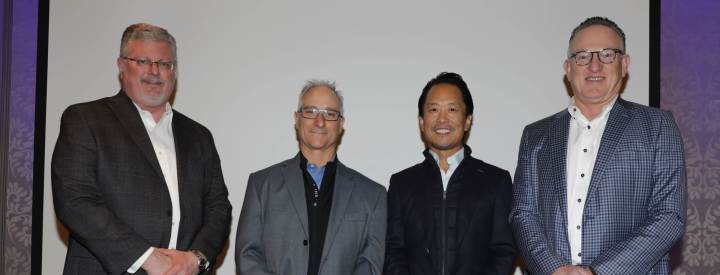A Message from the CEO
Last year was an interesting year for Northern California real estate. The anticipated recession never materialized—even if it remains to be seen if the economy will have a soft landing from the hyperinflation we experienced. The single-family housing market stumbled but did not collapse. The investment real estate market saw some serious challenges. The substantial increase in interest rates lead to a challenging environment for property valuations and greatly reduced sale transaction volumes. Investors, both buyers and sellers are working to understand where interest rates, capitalization rates and demand will settle. As is always true, location has a major impact on the investment market and the operational rental market for properties. Overall, office properties have been the most challenged as the continuance of remote work adversely impacted demand, but all property types have been impacted by the changed market conditions. In many ways the rental demand for multifamily properties in Northern California has come back well. Occupancy is strong and, in many submarkets, rent rates are back to pre-pandemic levels. However, market rent growth cooled in the second half of 2023. Our company had one of its better growth years. We added 10 new multifamily properties. We also added twenty-three new commercial properties totaling nearly 900,000 square feet. Further, we fully integrated two recent new hires into our senior management team – Michelle Widjaja as Vice President of Marketing and Education and Simone Robinson as Vice Preside of Human Resources, and they are excelling in their roles. The immediate future is not without its challenges. Bay Area layoffs continue to pop up in the news, interest rates remain high which will challenge many commercial and multifamily properties that will require financing in the next 24 months, and it is an election year. We thank each of our clients for their continued confidence in our firm and we continue to strive for excellence in providing service to our clients, fellow employees and those who live and work in the properties that we manage.
Commercial Corner -- BOMA Silicon Valley Outlook 2024

Group Photo: Kent Goetz L-R: Gene Williams, MAI, CCIM, Mark Christierson, James Chung, Scott Pritchett, CPM®
Quip of the Event: “James is the Brad Pitt of retail. I’m the Adam Sandler of office.” So said Mark Christierson, Executive Vice President of CBRE, as he took the stage for his office and R&D market presentation, when James Chung, Founder, The Econic Company, had completed his retail presentation, which was excellent and a tough act to follow. Christierson politely asked Scott Pritchett if he could speak first or third next year, or in any slot that didn’t follow Chung, who’s charisma and stage presence were abundantly evident to the audience.
Woodmont’s President of Commercial Operations Scott Pritchett once again moderated the broker panel for the early March BOMA meeting in San Jose and started off by relaying some California highlights, including the fact that our state has almost 9 million more people than the second-most populous state (Texas), we remain the 5th largest economy in the world and still raise more venture capital money annually than other state, even if 2023 declined 38% from the year earlier, with $285 billion in new funding.

Photo: Scott Pritchett, CPM® President Commercial Operations
James Chung presented market statistics and trends on retail real estate for both the South Bay and Peninsula, saying that the vacancy rate (at 4.5% and 6.7% respectfully) is the lowest since 2007, and in part because “unlike other CRE asset classes, retail isn’t commoditized and moreover, there is much more merchandising involved with placing retail occupiers in the vicinity of similar shopping concepts.” If there is weakness in the sector, Chung said it was in urban core environments, where downtown retailers are negatively affected by hybrid and remote working standards. However, he is bullish on regional retail conditions and expects retail real estate to remain very healthy over the next 18-24 months.
Mark Christierson launched into his office and R&D presentation by issuing the bad news first, which is that the Silicon Valley vacancy rate for offices has reached 18.6%, or “numbers approaching the tech wreck of 2001-2003” and that for 2024, he expects continued negative net absorption, meaning it will get worse before it gets better, or as he put it, “we’re not out of the woods yet.” The R&D sector is healthier, said Christierson, because people still have to go to buildings to build things, test things, conduct lab work. As such, the vacancy rate for R&D space is closer to 11%.
One of the more interesting slides Christierson presented featured the impacts of remote work on job attrition – or turnover, and showed that fully remote office policies had the highest level of turnover, with 22.7%, compared with fully in the office, at 11.9%, while an equal mix – or hybrid, office and remote work generated an attrition rate of 9.6%. These details are based on U.S. workforce data for 224 companies sourced through LinkedIn Talent Insights. Lastly, and as industry sectors go, AI will be the leading source of office space expansion and follow in the footstep of previous occupancy drivers in the Valley, starting with defense contractors in the early days, then computer (hardware, 1970s and 1980s)), computer software (1990s), and most recently networking systems and of course, the Internet (since 1996).
Gene Williams, Managing Director, Valbridge Property Advisors, was the third presenter at the luncheon and offered insights on capital markets and valuation trends affecting office, industrial, multifamily and retail real estate. Foremost, Williams showed the relationship between Treasury’s 10-year notes and capitalization rates and how the gap narrowed late in 2023 to 240 basis points, versus 540 basis points in 2020. Along with the Fed raising its Federal Funds rate, that essentially doubled borrowing costs, with interest rates for property loans currently in the mid-6% range. He said the only loans available now are full recourse loans – unless borrowers can get and opt for CMBS loans – yet those come with their own hurdles and cost barriers. Williams doesn’t think much of this is going to change this year, though the situation seems to be stabilizing and, as other market watchers have said, “there is a wall of capital waiting to invest in commercial property” once there is greater clarity and certainty in the market. That said, he referenced Costar’s prediction that prices will decline through 2025 and cited a couple of local trades that reflect some of the deep discounts we are beginning to experience. For example, 303 Almaden in downtown San Jose sold in mid-November last year for $23.75 million, or $142.76 per-square-foot (psf), or a 70% discount from its previous trade, in 2017 at $80.15 million. The building is 69% occupied. Market Square in San Jose (formerly Community Towers) also sold in May last year for $34.2 million, or $105.69 psf. The prior sale was for $141.35 million. The building is 74% occupied and it traded at 10.5% cap rate based on existing income. The buyer was the same entity for both deals – Bridge Group Investments, led by George Mersho, CEO of the Shoe Palace in Morgan Hill.
Of note, and with all the loan maturities coming due across the country for all property sectors – and the accompanying gloom in terms of distress in the system, Williams reminded the audience that a similar situation played out from 2010-2012 and on the heels of the Great Financial Crisis. At the time, the market expected waves-upon-waves of loan defaults, yet it never materialized. Why? Because owners and lenders were largely able to work things out using extend and blend, and extend and pretend loan adjustments and capital infusions to keep the lights on. He thinks we could be in the same situation as we go deeper into 2024 and into 2025.
Multifamily Market Roundup
The chronically under-supplied housing market in Northern California is, unfortunately, likely to get worse before it gets better, if we are reading between the lines correctly. For the 21 months beginning in mid-2022 until now, pencils were down on new projects for many developers and investors. By now, we all know the reasons for this: the mercurial rise in interest rates coupled with stubbornly high construction costs that made it difficult to profit from new apartment communities. One builder quipped in a story, “I can build an apartment building for $6 million and at completion, it’s worth $5 million.”
Given the timeline it takes to line up financing and build even a mid-size apartment community – three years or so, and that doesn’t take into consideration acquiring and entitling the land, one can easily anticipate a severe supply shortage in most of our submarkets by 2026-2028. The Fed has conveyed that it would lower interest rates this year, with the most recent projection that it will likely do so later this year, and there will be fewer cuts than previously hoped. That sentiment was reflected by panelists at the late-January National Multifamily Housing Council (NMHC) Conference in San Diego, and mostly because they had the sense that the worst was over after the Fed paused on interest rate increases.
The nearly frozen capital markets segment of the multifamily industry may see some thawing as we go deeper into the year. At the NMHC conference, RealPage Chief Economist Jay Parsons said that he could see apartment valuations bottoming and cap rates settling in the mid-5% range. He added that buyers seem more resigned to the reality that anything priced more favorably is likely to be older, more challenged assets in less-desirable submarkets.
Others at the conference estimated that there is a much as $240 billion in capital that is waiting to be deployed, once the Fed meaningfully cuts rates and investors return to the multifamily market in force.
On multifamily distress, Parsons thinks that much of it will get worked out behind the scenes or extended, while other situations could turn into ‘loan-to-own’ ownership changes where debt funds take over assets and wait it out for better pricing and market recovery.



